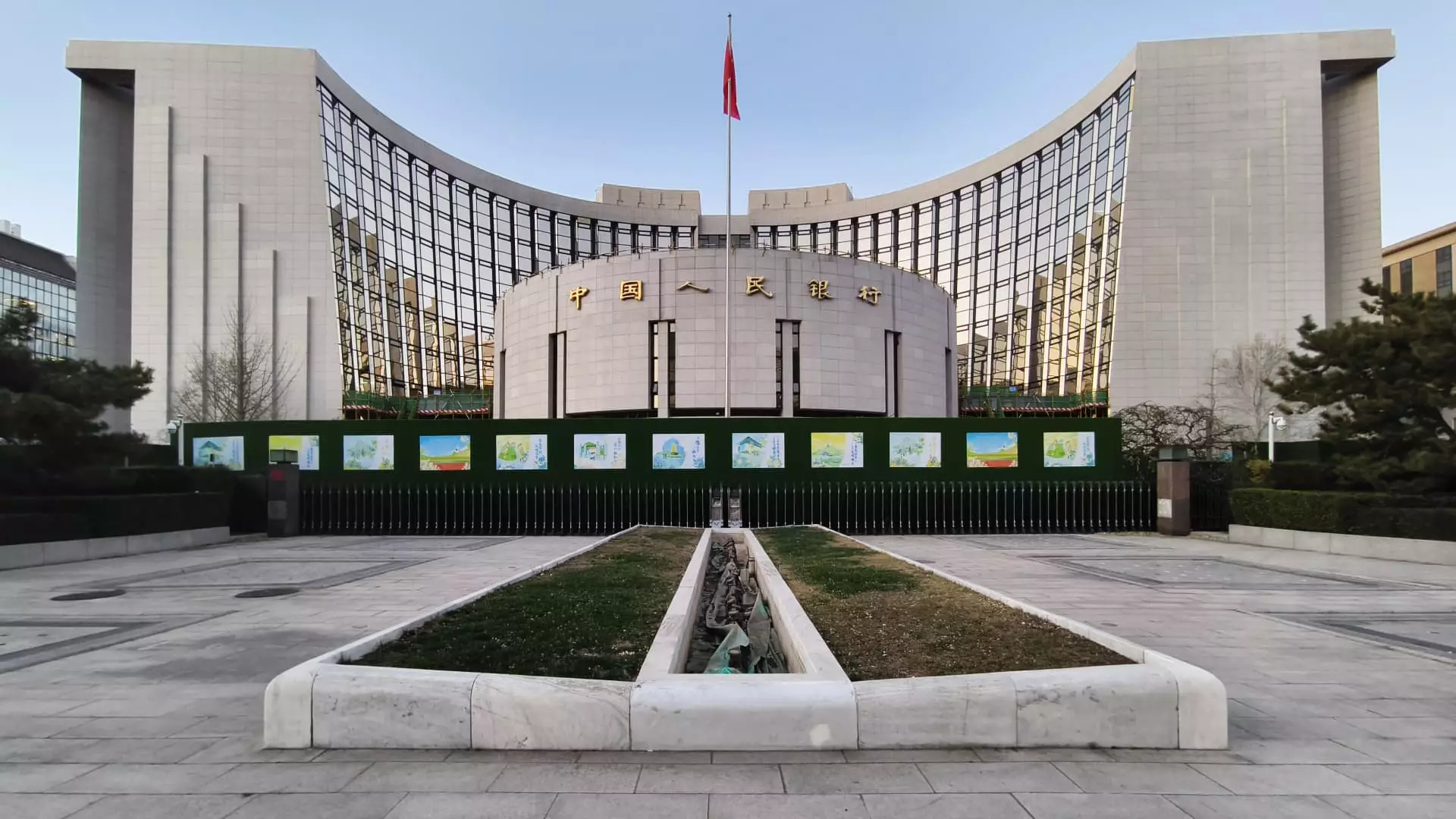In a move signaling its cautious approach to monetary policy, the People’s Bank of China (PBOC) recently announced that it will maintain its key lending rates. The one-year loan prime rate remains at 3.1%, while the five-year loan prime rate holds steady at 3.6%. This decision comes at a time when the Chinese economy grapples with multiple challenges: sluggish growth, a declining yuan, and external pressures from global monetary policies, particularly following the U.S. Federal Reserve’s recent interest rate cuts.
The stability of the loan prime rates reflects a broader strategy by Chinese authorities striving to shore up economic momentum despite the potential for further currency depreciation. The one-year loan prime rate predominantly influences corporate borrowing and individual loans, while the five-year rate serves as a benchmark for home mortgages. Analysts had anticipated this decision, as demonstrated by a Reuters survey of economists, which indicated a consensus on the rates remaining unchanged amid the delicate balancing act of stimulating growth while managing currency value.
The PBOC’s decision comes on the heels of the U.S. Federal Reserve’s recent policy adjustments, where a 25-basis-point interest rate cut was announced. The Fed further suggested a more conservative reduction trajectory for 2025 than earlier projections had indicated. Importantly, this context raises questions about the interconnectedness of global financial systems and how external economic shifts can impact domestic monetary policies.
The weaker yuan has been a focal point of concern, with Farzin Azarm, managing director of equities trading at Mizuho Americas, remarking on the PBOC’s apparent reluctance to intervene aggressively in currency markets. The market sentiment suggests that the bank may allow the yuan to adjust freely, closely monitoring the broader implications while accepting the currency’s movements as part of a larger financial ecosystem.
In response to ongoing economic challenges, top officials in China have prioritized monetary easing, emphasizing interest rate adjustments as a tool to revitalize a faltering economy. This commitment to stimulus must be viewed in light of persistent issues such as deflation and lackluster consumer spending. Data emerging from the Chinese market indicates that recent stimulus measures, instituted since late September, have yet to materially reverse the adverse economic situation.
China’s economy is currently navigating through entrenched deflation, particularly concerning consumer sentiment and a languishing property sector, which has raised concerns among economists. Major financial institutions predict that the yuan may continue to weaken, especially in anticipation of potential trade tariffs from foreign policymakers. The overarching consensus among analysts suggests that while monetary policy tweaks are essential, they must be complemented by robust fiscal measures to engender long-term economic recovery.
Looking forward, analysts like Yan Wang, chief emerging markets and China strategist at Alpine Macro, assert that while monetary easing from the PBOC is crucial, fiscal measures will play an increasingly pivotal role in stimulating growth. The PBOC is expected to maintain a course of gradual rate cuts to counter the pressures faced by the yuan, and to buffer the economy from further stagnation.
Wang articulates a vision where monetary policy alone cannot shoulder the burden of economic revival; instead, a coordinated approach that incorporates aggressive fiscal stimulus will be necessary to navigate the complexities of the present economic landscape. The PBOC’s strategy of tightening its grip on lending rates while allowing for some currency depreciation may be just one part of a larger, more intricate puzzle as China seeks to sustain growth amidst both domestic and global challenges.
As China confronts a myriad of economic hurdles, the PBOC’s retaining of lending rates illustrates a careful monitoring of both internal dynamics and external pressures, while also positioning itself to use monetary policy judiciously. The journey ahead will require adept maneuvering, as the balance between stimulating growth and managing currency stability remains a prominent theme in China’s economic narrative.

Leave a Reply